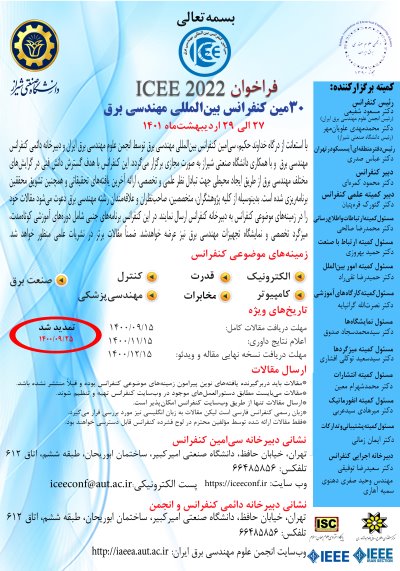0% Complete

نویسندگان :
کلمات کلیدی :
چکیده :
لیست مقالات بایگانی شده
سید محمد حسینی - محمود کریمی
Ali Fotokkiani - Ali Ghanbarian - Amirhossein Esteghamat - Ali Fotowat-Ahmady - Farzad Tahami
Abolfazl Saadati Moghadam - Ehsan Ranjbar - Amir Abolfazl Suratgar - Hajar Atrianfar
َAlireza Gholamrezaee - Hamid Farrokhi - Javad Zeraatkar Moqaddam
Sepideh Jahani VakilKandi - Farhad Bayat - Abolfazl Jalilvand
Atiyeh Keshavarz-Mohammadiyan
ناصر کیانی مهر - حامد زین الدینی میمند
Ehsan Foroughi Asl - Mohammad Haeri
Shirko Piri - Jalil Beyramzad - Esmaeel Khanmirza
Abolfazl Rajaiyan - Fahimeh Rahimi - Mehdi Saberi





